First appearance Raggedy Ann Stories | Gender Female Played by June Foray | |
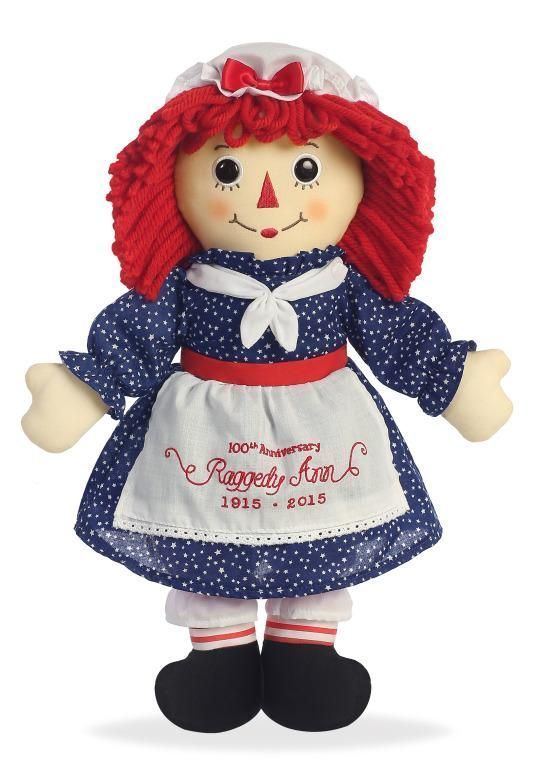 | ||
Movie Raggedy Ann and Andy in The Great Santa Claus Caper Similar Golliwog, Strawberry Shortcake, Chucky, Skipper, Ken | ||
My raggedy ann andy dolls
Raggedy Ann is a character created by American writer Johnny Gruelle (1880–1938) in a series of books he wrote and illustrated for young children. Raggedy Ann is a rag doll with red yarn for hair and has a triangle nose. Johnny Gruelle received US Patent D47789 for his Raggedy Ann doll on September 7, 1915. The character was created in 1915 as a doll, and was introduced to the public in the 1918 book Raggedy Ann Stories. When a doll was marketed with the book, the concept had great success. A sequel, Raggedy Andy Stories (1920), introduced the character of her brother, Raggedy Andy.
Contents
- My raggedy ann andy dolls
- A raggedy ann andy collection
- History
- Toys
- Media
- Books
- In popular culture
- References
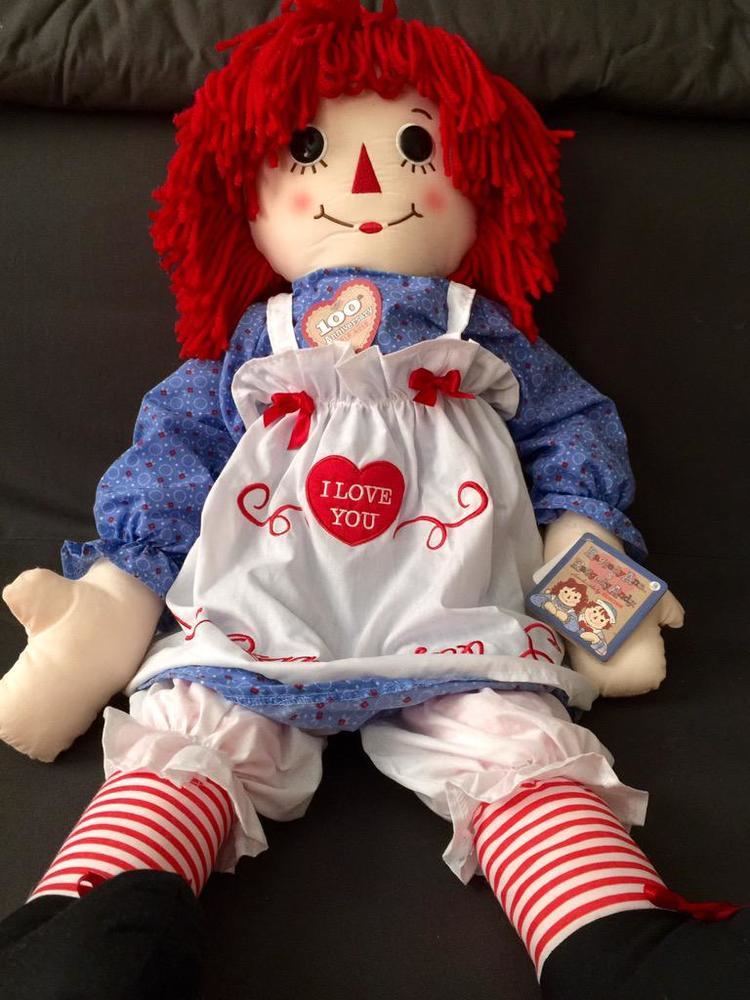
A raggedy ann andy collection
History
Johnny Gruelle biographer and Raggedy Ann historian Patricia Hall notes that the dolls have
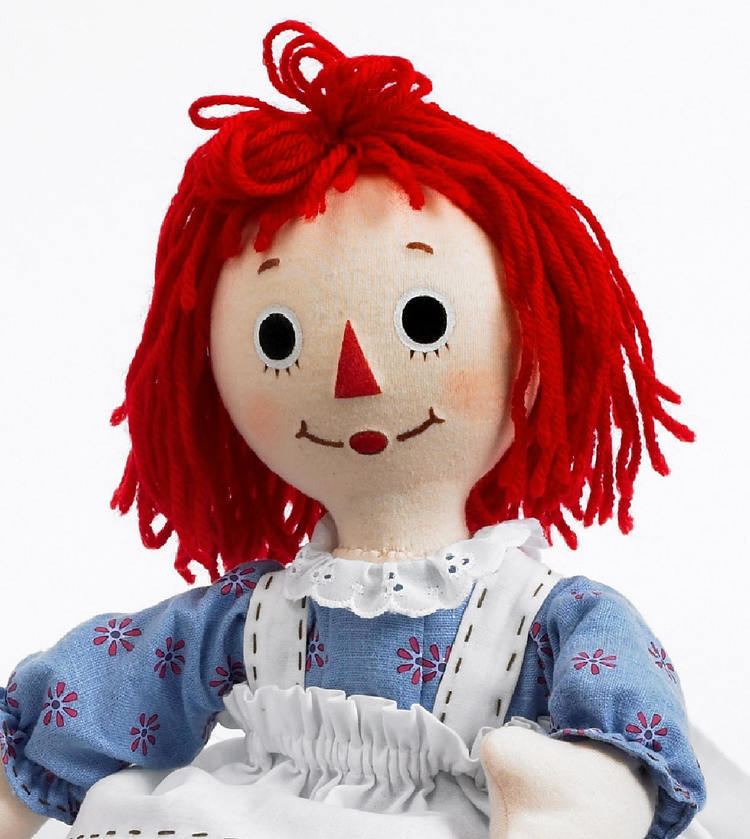
...found themselves at the center of several legend cycles — groups of stories that, while containing kernels of truth, are more myth than they are history. What makes this even more intriguing is that fact that Johnny Gruelle, either unwittingly or with the great sense of humor he was known for, initiated many of these legends, a number of which are continuously repeated as the factual history of Raggedy Ann and Andy.
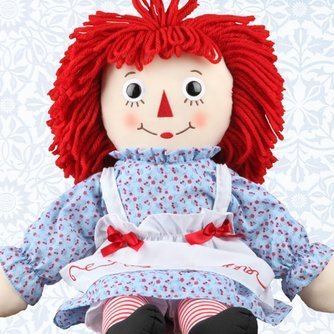
Hall notes that according to oft-repeated myth, Gruelle's daughter Marcella brought from her grandmother's attic a faceless doll on which the artist drew a face, and that Gruelle suggested that Marcella's grandmother sew a shoe button for a missing eye. He then combined the names of two James Whitcomb Riley poems, "The Raggedy Man" and "Little Orphant Annie" and suggested calling the doll Raggedy Ann. Hall says the date of this supposed occurrence is given as early as 1900 and as late as 1914, with the locale variously given as suburban Indianapolis, Indiana, downtown Cleveland, Ohio, or rural Connecticut. In reality, as Gruelle's wife Myrtle told Hall that it was Johnny who retrieved a long-forgotten, homemade rag doll from the attic of his parents' Indianapolis home sometime around the turn of the 20th century. As Myrtle Gruelle recalled, "There was something he wanted from the attic. While he was rummaging around for it, he found an old rag doll his mother had made for his sister. He said then that the doll would make a good story."
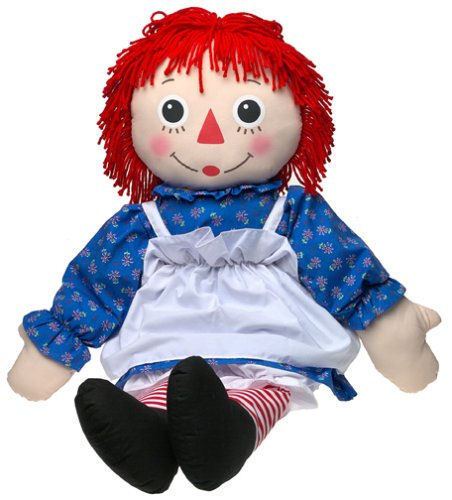
The couple's daughter, Marcella, had not yet been born when Gruelle found the doll, Myrtle Gruelle continued. Johnny Gruelle "kept [the doll] in his mind until we had Marcella. He remembered it when he saw her play [with] dolls. ... He wrote the stories around some of the things she did. He used to get ideas from watching her."
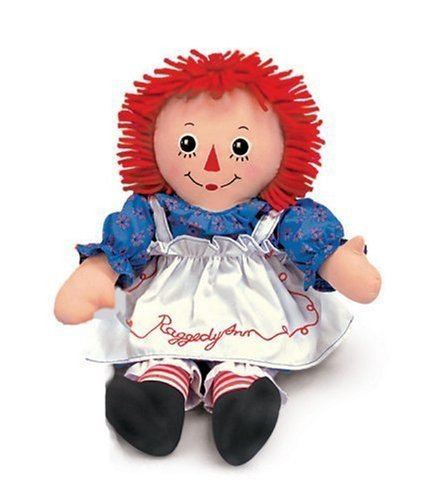
Additionally, Gruelle did not create Raggedy Ann as a tribute to his daughter following her death at 13 from an infected vaccination; Hall notes his patent application for the doll was already in progress, and the artist received final approval by the U.S. Patent office the same month as Marcella's death. Nonetheless, that myth led the anti-vaccination movement to adopt Raggedy Ann as a symbol, though Marcella died from an infected vaccination, not from the side effects of the vaccination itself.
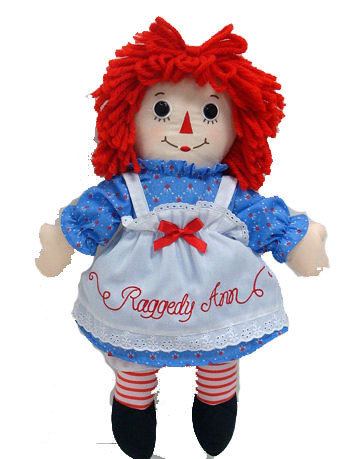
Raggedy Ann dolls were originally handmade. Over 75,000 dolls were made for Volland, a Gruelle book publisher, by the Non-Breakable Toy Co. of Muskegon, Michigan. between 1918 and 1926. Later, PF Volland made the dolls. In 1935 Volland ceased operation and Ann and Andy were made under Gruelle's permission by Exposition Dolls, and without permission (during legal limbo) by MollyE's Dolls, resulting in Gruelle v (Mollye) Goldman.
Toys
Raggedy Ann & Andy dolls
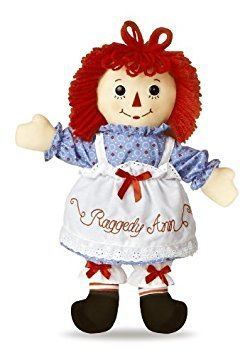
Sewing patterns for homemade Raggedy Ann dolls
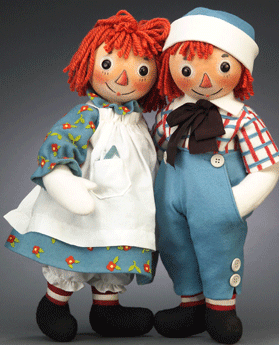
McCall's has continued to produce identical #2531 patterns with only a change in cover design. Simplicity Patterns released a licensed doll pattern for a different design doll that included all four sizes in the late 1990s.
Media
Many subsequent books were published and the characters made their way into other media, including:
Screen
Other Media
While Simon & Schuster and Hasbro claim to own trademarks to the Raggedy Ann and/or Raggedy Ann and Andy names, the original 1915 doll design and 1918 and 1920 books are in the public domain, their copyrights having expired.
In 2012 Hasbro signed Aurora World for a new line of Raggedy Ann and Raggedy Andy plush dolls.
In 1984, a Raggedy Ann balloon debuted at the Macy's Thanksgiving Day Parade, flying for two years. It returned in 2016.
The ostensibly cursed Annabelle doll is a Raggedy Ann doll.
Books
Many books were released and credited to Johnny Gruelle after his death, regardless of who wrote and illustrated them. Ethel Hays illustrated most of the Saalfield Publishing Company stories published from 1944.
Raggedy Ann and Andy's Grow and Learn Library A collection of 20 books published by Lynx, each story contains a lesson, such as maintaining friendship when someone moves away or why parents must go to work. Raggedy Ann and Andy live in Marcella's playroom with many other toys like Babette the French doll, Raggedy dog, The Camel with the Wrinkled Knees, Sunny Bunny, Bubbles the Clown, Tim the Toy Soldier and more.
In popular culture
Gruelle's home town, Arcola, Illinois, is the former home of the annual Raggedy Ann & Andy Festival and the Raggedy Ann and Andy Museum. The museum was closed and the festival discontinued in 2009. Some of the museum's contents were donated to The Strong National Museum of Play. Other parts of the collection are in Arcola at Rockome Gardens theme park. On March 27, 2002, Raggedy Ann was inducted into the National Toy Hall of Fame.
